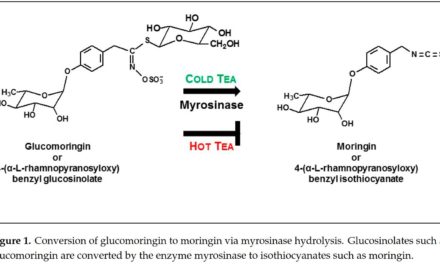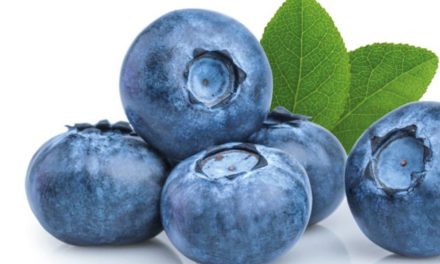Kaempferol: A Key Emphasis to Its Anticancer Potential
Muhammad Imran 1, Bahare Salehi 2,* , Javad Sharifi-Rad 3,* , Tanweer Aslam Gondal 4, Farhan Saeed 5, Ali Imran 5, Muhammad Shahbaz 6, Patrick Valere Tsouh Fokou 7,* ,Muhammad Umair Arshad 5, Haroon Khan 8, Susana G. Guerreiro 9,10,11, Natália Martins 9,10,* and Leticia M. Estevinho 12,13,*
1 University Institute of Diet and Nutritional Sciences, Faculty of Allied Health Sciences, The University of Lahore, Lahore 54000, Pakistan; mic_1661@yahoo.com
2 Student Research Committee, School of Medicine, Bam University of Medical Sciences, Bam 44340847, Iran
3 Zabol Medicinal Plants Research Center, Zabol University of Medical Sciences, Zabol 61615-585, Iran
4 School of Exercise and Nutrition, Deakin University, Victoria 3221, Australia; tgondal@deakin.edu.au
5 Department of Food Science, Nutrition & Home Economics, Institute of Home and Food Sciences, Government College University, Faisalabad 38000, Pakistan; f.saeed@gcuf.edu.pk (F.S.); aliimran.ft@gmail.com (A.I.); umairfood1@gmail.com (M.U.A.)
6 Department of Food Science and Technology, MNS-University of Agriculture, Multan 66000, Pakistan; shahbaz.ft@mnsuam.edu.pk
7 Department of Biochemistry, Faculty of Science, University of Yaounde 1, Yaounde P.O. Box 812, Cameroon
8 Department of Pharmacy, Faculty of Chemical & Life Sciences, Abdul Wali Khan University Mardan, Mardan 23200, Pakistan; hkdr2006@gmail.com
9 Faculty of Medicine, University of Porto, Alameda Prof. Hernâni Monteiro, 4200-319 Porto, Portugal; sguerreiro@ipatimup.pt
10 Institute for Research and Innovation in Health (i3S), University of Porto, 4200-135 Porto, Portugal
11 Faculty of Nutrition and Food Science, University of Porto, 4200-465 Porto, Portugal
12 Department of Biology and Biotechnology, School of Agriculture of the Polytechnic Institute of Bragança (ESA-IPB), Campus de Santa Apolónia, 5301-854 Bragança, Portugal
13 CIMO, Mountain Research Center, Polytechnic Institute of Bragança. Campus Santa Apolónia, 5301-855 Bragança, Portugal
* Correspondence: bahar.salehi007@gmail.com (B.S.); javad.sharifirad@gmail.com (J.S.-R.); ptsouh@gmail.com (P.V.T.F.); ncmartins@med.up.pt (N.M.); leticia@ipb.pt (L.M.E.);
Tel.: +98-21-8877-7539 (B.S.); +98-21-88200104 (J.S.-R.); +23-767-662-0503 (P.V.T.F.);
+351-22-5512100 (N.M.); +351-273303342 (L.M.E.)
Received: 16 April 2019; Accepted: 15 June 2019; Published: 19 June 201
Abstract
A marked decrease in human cancers, including breast cancer, bone cancer, and cervical cancer, has been linked to the consumption of vegetable and fruit, and the corresponding chemoprotective effect has been associated with the presence of several active molecules, such as kaempferol. Kaempferol is a major flavonoid aglycone found in many natural products, such as beans, bee pollen, broccoli, cabbage, capers, cauliflower, chia seeds, chives, cumin, moringa leaves, endive, fennel, and garlic. Kaempferol displays several pharmacological properties, among them antimicrobial, anti-inflammatory, antioxidant, antitumor, cardioprotective, neuroprotective, and antidiabetic activities, and is being applied in cancer chemotherapy. Specifically, kaempferol-rich food has been linked to a decrease in the risk of developing some types of cancers, including skin, liver, and colon. The mechanisms of action include apoptosis, cell cycle arrest at the G2/M phase, downregulation of epithelial-mesenchymal transition (EMT)-related markers, and phosphoinositide 3-kinase/protein kinase B signaling pathways. In this sense, this article reviews data from experimental studies that investigated the links between kaempferol and kaempferol-rich food intake and cancer prevention. Even though growing evidence supports the use of kaempferol for cancer prevention, further preclinical and clinical investigations using kaempferol or kaempferol-rich foods are of pivotal importance before any public health recommendation or formulation using kaempferol.
Keywords
kaempferol; pharmacokinetics; pharmacodynamics; antioxidant; anticancer;
chemoprevention; apoptosis; cell cycle arrest; metastasis; reactive oxygen species








